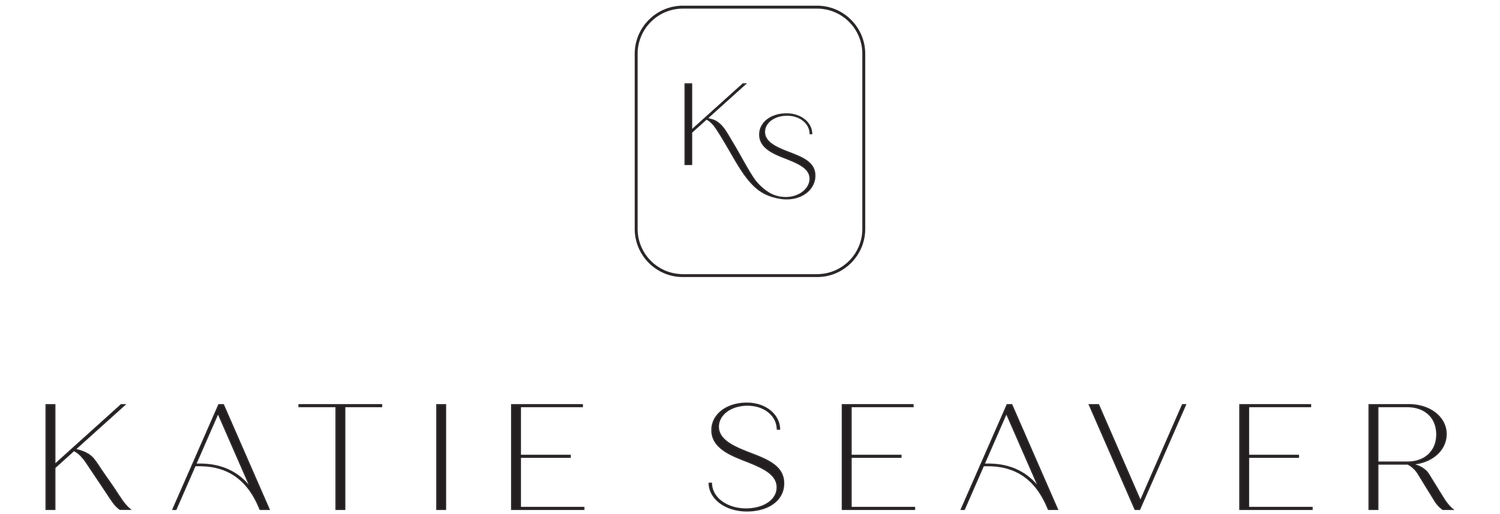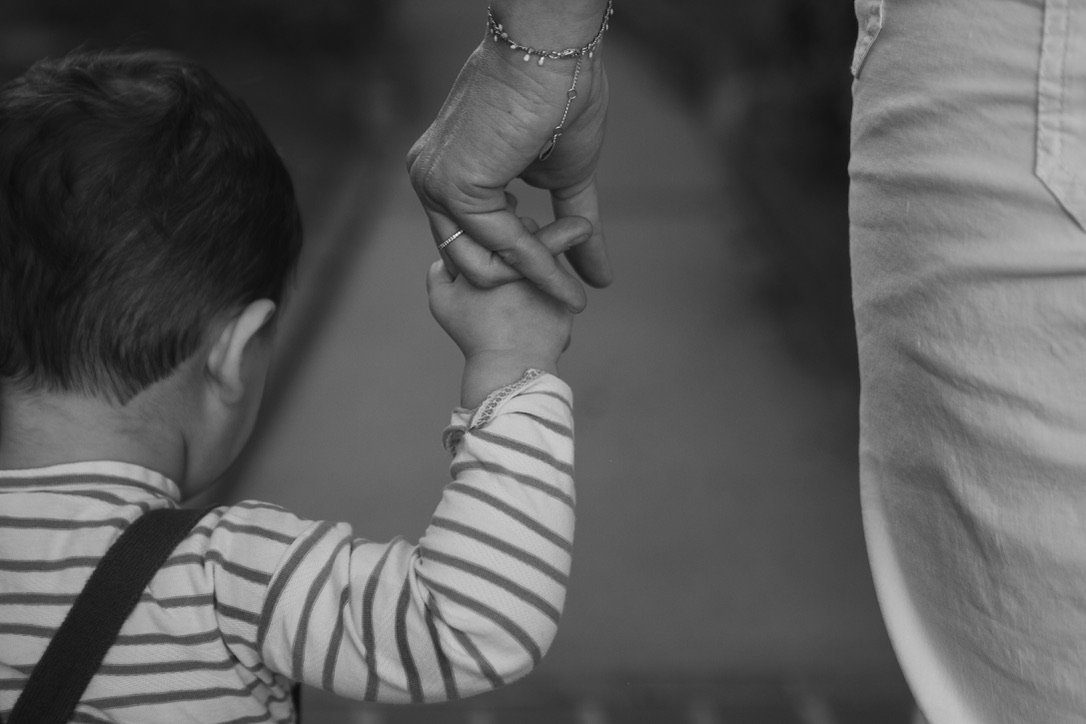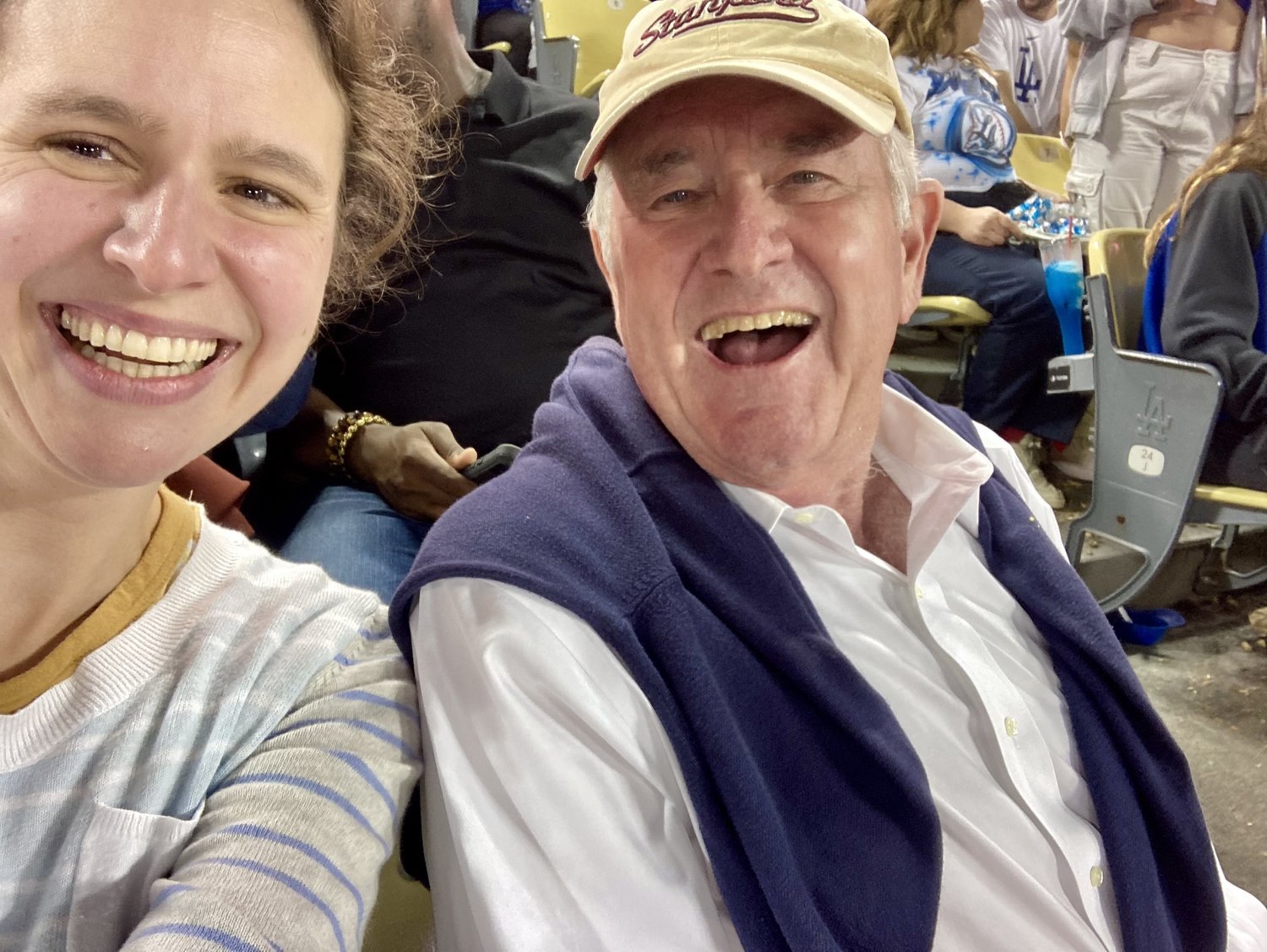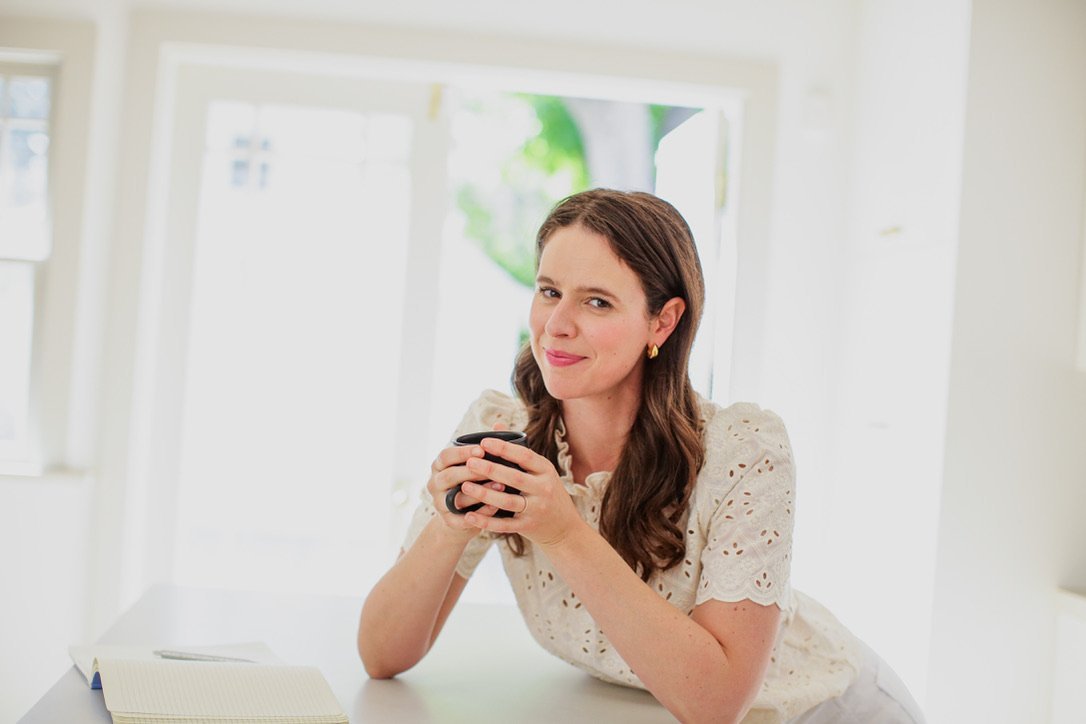Blog
Announcing: 10 Hours Back
Today’s announcement is for you if you’ve ever wanted more hours in your week.
If you’ve ever thought I’d love to find a way to work 10 fewer hours at my job, so I could have more time + energy for my… life.
Well, today, I want to offer it to you.
Literally.
Today, I want to announce 10 Hours Back.
(!!!!)
In 10 Hours Back, I’ll be helping professionals reduce their workweeks by 10 hours – no matter their work culture, industry, or boss. It’s a 4-month, small-group coaching program.
That’s such a radical, wild, fabulous idea, that I just want to say it again: I will be helping a small group of professionals reduce their workweek by 10 hours.
10 hours back. Per week.
…
Too many of us are chronically too tired, too busy, and too stressed. And a big part of the reason is that we work… a lot.
But too often, it just feels like this is what it is to be a working adult. I mean, isn’t that what your colleagues, your best friend, and your college classmates are also doing? Working a lot, feeling squeezed from all directions?
And I say: it may be that everyone you know is acting this way. But actually, it’s not at all inevitable.
For years now, I’ve been helping my 1:1 clients cultivate better work-life balance, by working fewer hours without sacrificing work quality. It’s a real passion of mine because in my first corporate job, I struggled in a huge way with figuring out how to do good work without losing my life outside of work (and was convinced that only geniuses or unicorns could pull it off.)
The truth is: You don’t have to be a genius to work less in your career without sacrificing quality. Or a unicorn.
But you need to learn new skills, take new actions, and relate to your work and life a bit differently. And it can be very hard to pull off on your own — help can be a game-changer.
The group will start in May, and enrollment will open to the waitlist starting in April. There are only 10 spots available, so I’d recommend signing up for the waitlist because there is a good chance it will sell out.
Curious? Lit up with a technicolor fire at the idea of getting 10 hours back each week?
Learn more + sign up for the waitlist here.
…
As always, I’m rooting for you. You’ve got this.
Katie
p.s. Here’s that link again, to learn more about 10 Hours Back. Because if you’re anything like I was, you’d freaking love 10 hours back each week.
p.p.s. I share more about 10 Hours Back, why I started it, and my work-life balance role model on this week’s podcast. Listen here.
Sign up for my newsletter to get helpful + encouraging essays like this every Sunday morning. It’s free!
One thought that immediately reduced my anxiety
Lately, when I’ve been anxious or stressed, here’s something I’ve been saying to myself:
Is anything actually wrong, outside of the swirling thoughts in my head?
And then I will empirically and freshly answer the question, by looking around me.
Does that sound weird? Confusing? I’ll give a personal example: The last time I did this, a week ago, I was sitting in my living room, totally spun out and anxious about something.
And then:
I looked at the blue-grey Ikea couch I was sitting on.
That was fine.
I looked around my living room, over to my table.
Nothing wrong with that – my husband was nearby. My kids were asleep in their cribs. The house was quiet.
I wiggled my toes.
Nothing wrong there.
Arms and legs were fine, too.
Huh, I thought to myself. In this particular moment, on this particular Ikea couch, in my particular house… nothing is actually wrong.
Huh. Nothing is wrong right here and right now.
And just like that…anxiety went from a 10 to a 6.5.
Not gone, but definitely…quieter.
…
Of course, I am not the first person in the universe to have this revelation (see also: the Buddha). But remembering to ask the question, and empirically looking for the answer, have helped me to calm the swirling waves of emotion + worry quite a bit lately.
I wonder if this reminder might help you, too.
…
As always, I’m rooting for you in the week ahead. You’ve got this.
Katie
Sign up for my newsletter to get helpful + encouraging essays like this every Sunday morning. It’s free!
"I have everything I want. Why am I not happy?"
Recently, several of my clients have been telling me that they — amazingly, wonderfully — have achieved something they used to dream of.
They have the pool, the salary, the first-class seats they dreamed of as a young girl whose parents struggled financially.
They have the international social-impact job they dreamed of as a big-hearted twenty-something.
They have the baby, the relationship, the house, they dreamed of as a former version of themselves.
And yet.
And yet, it looks different from here.
It feels different from here.
Often, it doesn’t feel as absolutely incredible as they thought.
There’s a lot I could say, to this current version of you. (Frankly, this is often the seed that kicks off entire 1:1 coaching engagements.)
But here, today, I just want to say: don’t be the prisoner of your past self’s dream.
Your past self didn’t want you to be stuck, tired, or unhappy. You past self could not have possibly known what the view would look like from here.
Give yourself permission to dream something new.
I’ll say it again: Give yourself permission to dream something new.
As always, I’m rooting for you. You’ve got this.
Katie
Sign up for my newsletter to get helpful + encouraging essays like this every Sunday morning. It’s free!
A common misconception about authenticity
Recently, I’ve come to realize that there’s a very common misconception about authenticity, when it comes to social interactions.
When a lot of people think about being more “authentic,” they assume they’d have to share their deepest, darkest shame – or break into tears while chatting with another regular at their neighborhood sushi place.
I’m a big believer in authenticity. I think it’s a requirement if you want to have a life that’s meaningful, satisfying, and not exhausting (more on that in episode 2 of my podcast , or this ). Authenticity is that umami flavor that enriches every single social interaction or relationship.
And: I think that this perspective on what authenticity is… is completely wrong.
...
Sure, sometimes authenticity does mean sharing your deepest, darkest shame, or letting those huge feelings + tears tumble out with a trusted person. Sometimes that feels profoundly right.
But authenticity can also be talking about something mundane — the weather, your (uneventful) weekend in a way that feels present + honest.
To me, the authenticity is in the words, and in your connection to yourself.
Authentic words mean that you choose to share something just slightly more true + deep + maybe more complex than you otherwise would have. 20% more is about right – again, it doesn’t have to be your deepest shame.
Authentic connection to yourself will show up in in your delivery; were you *actually in touch with yourself* when you shared it?
We can share something brutally honest, but be dissociated, and it will feel disconnected to the other person. We can share something just slightly nuanced, but be connected with ourselves, and it will feel profoundly intimate to the other person.
I think we can all feel when we’re with someone who is engaging authentically — even if they’re just telling us about seeing their uncle for Thanksgiving, there is a depth and a freshness to it. We feel connected to them.
…
I think that everyone benefits when we choose to be more authentic in our interactions. Your benefit: it feels good to be true to yourself — there is a pressure that gets released. It is less tiring, and it can lead to a deeper feeling of connection, even to the barista at Starbucks.
And the other person benefits, too. Have you ever had a connection, even in a brief, casual way, with someone who was really present? Didn’t it feel great?
Could you try to have 1 interaction this week (or weekend), that’s just 25% more authentic?
...
Take care + stay cozy everyone. As always, I'm rooting for you.
Katie
p.s. I talk to most of my clients about authenticity — because authenticity and energy are the foundation on which everything else (major action, deeper relationships, career advancement) is built.
If you'd like to work with me 1:1, learn more here.
Sign up for my newsletter to get helpful + encouraging essays like this every Sunday morning. It’s free!
Why I only offer long-term coaching engagements
I only offer 4- and 6-month coaching engagements, and one of the most common requests I hear from potential clients is: I’m interested in hiring you, but I’d like to do something shorter. Could we do two months? One month? Could I just pay by the session?
And my answer to that is very easy:
No.
No, I unfortunately do not offer shorter-term coaching.
Truthfully, I completely understand the desire for a shorter-term coaching engagement — eight months can seem like a lot! It can be scary to make that time and financial commitment to just one coach!
But choosing to only offer long-term coaching was a decision I made very intentionally, and with my clients’ interests at heart.
I thought that today, I could share a bit about why I made that decision.
…
I’ve been coaching for over 8 years now (which is quite a long time in a young profession like coaching!), and for years I offered all kinds of flexibility in hiring me. Hire me by the session! Buy a 5-session package! A 10- or 20-session package!
But I found, time and again, that the clients who got the best results, the fastest, were the ones who made a longer-term commitment to coaching.
Did you catch that? The clients who got not only the best results, but also the fastest results, were the clients who made a longer-term commitment to coaching.
That finding was counter-intuitive to me.
I would have thought, to be honest, that it didn’t matter whether they bought a 20-session package, or ended up doing 20 sessions, on a pay-by-the-session basis. But that wasn’t the case. Not that clients who paid by the session got terrible results — they often got great ones. But the ones who made a longer commitment were much more consistently thrilled by their results, and got good results the fastest.
And as I reflected on my clients — both the ones that made longer commitments and the ones that didn’t, I came to believe this difference was due to a few things:
The clients who made longer-term commitments were more intentional about the decision to get coached. They knew they were making a larger financial and time commitment. People who carefully consider the decision to get coached are more likely to get fantastic results — because they want coaching more, and show up in a more committed way.
The clients who made longer-term commitments were willing to go deeper and get messier. The deeper + messier you are willing to go, the better your results tend to be.
On a related note, the clients who made longer-term commitments tended to be more patient. They trusted that sometimes, being coached is like growing mushrooms— sometimes you don’t see anything for a few weeks, and then all of the mushrooms pop up overnight.
On the flip side, some clients who made shorter-term commitments were more likely to be antsy — they wanted to get this “coaching thing” done, with the fewest possible number of sessions, to save money (which I totally understand! Coaching can be expensive!). But because they were antsy, we often had to spend our coaching sessions just dealing with their anxiety that they weren’t going fast enough, which took up time we could otherwise spend…coaching on their actual problems.
…
At this point in my career, I think that part of my job is to not just sell what you want but to sell what I know will be most helpful.
So yes, I could offer a short-term coaching engagement. It’s possible that more people would sign up for that; I might make more money. But I don’t feel right, selling people on something that will be less helpful to them.
For me, it’s an integrity issue.
…
And frankly, when people tell me they just want a 3-month coaching engagement, I smile internally to myself. I totally get why you think you want that, I think. But actually, you would be happier, in the end, if you made a longer-commitment.
…
I hope this gives a glimpse behind the curtain, into why I run my business like I do. And if you’d like to experience an coaching engagement with me, you can learn more here. I’ve got two spots currently open for new clients.
As always, I’m rooting for you in the week ahead. You’ve got this.
Katie
Sign up for my newsletter to get helpful + encouraging essays like this every Sunday morning. It’s free!
New year advice, from my heart
I post these essays on Sundays, and this year, January 1 falls on a Sunday.
It’s funny — you’d think that January 1st would be an auspicious day for a life coach. The day of days. The day when we start fresh, set big goals, get going.
And yet — I’m not really that kind of life coach. Honestly, I’m not really that kind of person.
And when I reflected on January 1st, and what it means to me… what came up for me is that typically, by January 1st, I am tired.
That stretch of year from Thanksgiving to January 1st always feels like a lot to me.
And it feels like a lot to me, even as a person who is very, very, very thoughtful about her professional commitments, her social commitments, her holiday-celebration-commitments. (I’m not an elf-on-the-shelf mom, for example, and have no plans to be. I don’t choose to spend my energy there.)
And still, I usually find myself on January 1…needing to fill up the tank a bit.
So as I was reflecting on this start to the year, I just wanted to remind you:
It’s okay to be where you are.
It’s okay to want what you actually want.
Here. Now. Today.
Here, now, today, I actually want some extra rest + recharging time.
What do you actually want?
…
As always, I’m rooting for you. You’ve got this.
Katie
p.s. If what you want is to condense 1-2 decades of things you could "learn on your own" into 8 months, may I recommend hiring me? I currently have 2 openings for new clients. Learn more here.
Sign up for my newsletter to get helpful + encouraging essays like this every Sunday morning. It’s free!
Tired all the time?
When I was training to be a coach, one of my mentors said to me: “One of the most exhausting things you can possibly do is try to be someone that you’re not.”
And it was one of those moments when a gong is rung, and the after-waves of noise have rippled through my life in the years, since.
One of the most exhausting things you can possibly do is try to be someone you’re not.
Woah.
Yes.
I’ve found it to be true on a macro level of a life: the fastest way to completely exhaust ourselves is to pretend we’re someone we’re not when it comes to career, our partners, or where we live.
But I’ve also found it to be true on the micro level: a cocktail party can be exhausting or grounding, depending on how true I am to myself. An interaction with a cashier at the grocery store can be neutral, or life-affirming, depending on how authentic I am.
I remind myself of it constantly, and I’ve said it more often than I can count, to my clients. So today, I wanted to make sure I said it to you, too:
One of the most exhausting things you can possibly do is try to be someone you’re not.
…
(And, of course, knowing who you are + what you want is not necessarily straightforward. Here’s one place to start.)
As always, I'm rooting for you. You've got this.
Katie
p.s. I help my clients develop clarity + direction for their lives — and actually make meaningful progress towards a life that feels right to them. I currently have two spots open for new clients; you can find more here about working with me.
Sign up for my newsletter to get helpful + encouraging essays like this every Sunday morning. It’s free!
One thing that helps me manage my anxiety
I’ve been experiencing an uneasy feeling in my body.
Recently, I was anxious about a new step I was taking in my business.
Quite anxious.
As I was exploring my anxiety, I noticed that I also had the thought: Because I’m anxious, something *must* be wrong.
My clients know that one of my favorite things is identifying thought errors — subtle errors in reasoning in the brain. And it became clear to me: “Because I’m anxious, something must be wrong” was a thought error.
My brain had simply made a mistake. It wasn't true that because I was anxious, something had to be wrong.
Actually, I could be anxious, but nothing could be wrong.
Which was exactly true in this particular moment: nothing was wrong at all. Rather, my anxiety was actually simply telling me that I was at my developmental edge — doing something new, and, yes, a bit risky.
I played with a new thought, instead: I can be anxious, and nothing can be wrong.
…
Here’s some advice that might help reduce your anxiety:
Have you ever heard the advice, in the self-development world, to just re-interpret anxiety as “excitement”? You aren’t anxious, you’re just buzzing with excitement!
I have often felt annoyed with this advice. No, I would think to myself, I’m actually anxious.
But this new thought actually did feel believable:
I can be anxious, and nothing can be wrong, I told myself.
I can be anxious, and it just means that I’m at my developmental edge.
So, I have been reminding myself a lot lately: I can be anxious, and nothing can be wrong. I’m just at my developmental edge.
And then taking a big breath, continuing to feel anxious, and moving forward.
…
As always, I’m rooting for you in the week ahead. You’ve got this.
Katie
p.s. Most of us have thought errors so subtle, and so personalized, that it can be hard (or impossible) to spot them on our own. That’s where working with a coach can be life-changing: just shifting a few key thoughts can completely change your experience of your own life. If you’d like to work with me, learn more here.
If this essay resonated with you, you'll love my newsletter. Sign up for free + get new ideas every Sunday!
My favorite insight about finding your creative voice
This week’s essay is for any of you who create things.
It’s a story that’s been on my mind, from the Finnish-American photographer Anro Minkkinen (in Oliver Burkeman’s lovely book, Four Thousand Weeks).
Minkkinen points out that a very common problem for beginner creators — or even intermediate creators — is that their work can feel unoriginal. Derivative. Generic.
Imagine, Minkkinen offers, that you're early photographer who’s spent three years working on platinum studies of nudes. You show your work to a gallery owner, only “to be told your pictures aren’t as original as you thought, because they look like knockoffs of the work of the photographer Irving Penn.”
Discouraging, right?
And, at that point, it can feel like the answer is to shift directions. To choose something new — somewhere you can distinguish yourself, be different.
And yet, Minkkinen would say, you actually should do the exact opposite. To understand why, he gives a parable about Helsinki’s main bus station:
“There are two dozen platforms there, he explains, with several different bus lines departing from each one – and for the first part of the journey, each bus leaving from any given platform takes the same route through the city as all the others, making identical stops.
“Think of each stop as representing one year of your career, Minkkinen advises photography students.”
In the first few years of your career or your creative practice, you will be on the same route through the city as anyone else. Every single bus goes through the same stops in downtown Helsinki, after all.
The first one, three, or five stops (or years, in this parable) of your work will feel derivative.
Generic. Uninteresting. Perhaps boring.
But the solution? “Stay on the bus. Stay on the fucking bus,” Minkkinen says. Why?
“A little farther out on their journeys through the city, Helsinki’s bus routes diverge, plunging off to unique destinations as they head through the suburbs and into the countryside beyond. *That’s* where the distinctive work begins. But it begins at all only for those who can muster the patience to immerse themselves in the earlier stage – the trial-and-error phase of copying others, learning new skills, and accumulating experience.”
…
And as Burkeman points out: this doesn’t just apply to creative work. It applies to anything where we put in time to deepen our skills and insight.
A relationship, for example. Or at a job of any kind.
Often, the most transcendent possibilities for that relationship, job, or creative work come when we have sat on that fucking bus through all the stops through urban Helsinki, and finally reach the original, spacious, profoundly unique countryside beyond.
As always, I’m rooting for you. You’ve got this.
Katie
Sign up for my newsletter to get helpful + encouraging essays like this every Sunday morning. It’s free!
On letting yourself go up in flames
Recently, I was talking to a client who is exploring a significant shift in how she relates to other people.
She’s craving deeper, more authentic connection. She’s realized she has often shown up, in the past, as a more surface-level, cocktail-party-charming version of herself.
But to show up differently — deeper, more authentically…it feels very, very weird.
Like she might take longer pauses after someone spoke, to figure out what she actually wanted to say next, and the other person might think she was strange for taking so long.
Like she doesn’t even know what to share, and how to listen, as this deeper, more authentic, non-charming-cocktail-party version of herself.
(Can I also say how much I adore my clients? The fact that they undertake this kind of important, scary transformation brings me so much joy + pride.)
…
I always want to respond to my clients’ specific concerns. So, over several sessions, we talked about what she might do: techniques for listening, talking, and staying connected with herself when she is in conversation with others.
But I also try my best to get to the root of the matter. And I told her two things, that I thought might also resonate with you.
Here’s the first one:
Sometimes, we need to let ourselves go up in flames, so we can be born again.
This, of course, is an allusion to the Phoenix, from Greek mythology (and, more recently, Harry Potter fame) — which literally sets itself on fire, and is born again, as a baby bird, wobbly and new.
I’m a big believer in the power of slow, iterative change. But I also believe that at least sometimes, the change that is needed will feel like burning the whole thing down and then letting yourself be strange and new and awkward. And that doesn’t have to be a bad thing.
I speak from personal experience.
I have had my own periods of letting myself go up in flames. My most dramatic was in my mid-twenties, when I quit my management consulting job, shaved my head, broke up with my boyfriend, and questioned everything about how I related to my life (how did I want to spend my day? Who did I want to spend time with?). I often felt like I was blowing up my own life — I jokingly-not-jokingly referred to it to my roommates as “ka-boom-ing,” at the time.
And yet, I look back on my courage and choices during that time, as one of the things I am most proud of, in my whole life.
It took an enormous amount of courage to “ka-boom” the whole thing. And two of the things that are most precious to me — my work as a coach, and my relationship with my now-husband — started soon after that time.
I don’t think I could do the work that I do, or have connected with my husband — if I hadn’t let myself become someone new — someone with more depth, complexity, darkness, sadness, self-knowledge, and strength.
So that’s the first thing I wanted to share: Sometimes, there is a time to let ourselves go up in flames, so we can be born again.
…
Here’s the second thing:
Letting yourself burn down + be born again often feels more dramatic on the inside, than it looks on the outside.
During my mid-twenties conflagration, a big theme for me — like my client, actually — was trying to figure out how I could actually be authentic in interacting with others.
I was questioning my facial expressions — were they authentic? Or just performances?
I was questioning whether I was truly listening when other people spoke. This often resulted in me taking a pause after the other person spoke to process what they said; an odd move, since most conversations involve slightly overlapping talking between the participants.
I was questioning what I said — how could I say what was true, and not what was people-pleasing, or conflict-avoiding.
It was an intense time.
And yes, sometimes, some people did not enjoy talking with me as much. They found me a little…shall we say…annoying.
And also: during this time, I remember meeting up with an old friend who was in town for the weekend from Denver. We sat in a park by the Hudson River, soaking up the New York City springtime.
I felt nervous seeing him, because I didn’t seem to be able to “turn off” this strange internal transformation I was undergoing. I told him that I must be seeming kinda… weird.
He looked at me, and shrugged. “You seem a little tired, maybe a little quieter,” he told me. “But otherwise…fine.”
And… whew.
Whew, what a relief it was to be able to be with this old friend, to be feeling so much, and to have him not actually experience that much of my internal, dramatic, burning-down-and-being-reborn.
It turned out that this was mostly true.
While there were some people who questioned or criticized my choices at the time, most people noticed nothing at all. Some people noticed something — but often, didn’t really care.
And the people who even now matter the most to me — across the board, they mostly didn’t mind, or notice.
So I’ll say again: letting yourself burn down + be born again often feels more dramatic on the inside than it looks on the outside.
…
Is there a radical transformation brewing within you? I hope this helps.
And I’ll also say: it was my work with my first life coach that gave me the courage + insight to take on my own initial transformation. Many of my clients find that working with me gives them the confidence + clarity to undertake their own burning-the-whole-thing-down — if burning-the-whole-thing-down is necessary.
If you’d like to work with me 1:1, learn more here.
As always, I’m rooting for you. You’ve got this.
Katie
Sign up for my newsletter to get helpful + encouraging essays like this every Sunday morning. It’s free!
Listening to your "calling"
I believe that each person — if they listen quietly and carefully — knows the challenge that is next for them.
I refer to these challenges as “callings” — because they feel like something that calls to us. Something that nags at us, begging to be dealt with.
The word “calling” may sound a bit abstract, but callings don’t necessarily mean a quest to find the fairy elves’ secret orb. Quite the opposite:
Sometimes we are called to find clarity. To get clear about the next step in our career, or about what to do in a relationship.
Sometimes we are called to build a skill. We need to be better at talking to our partner when we’re stressed without getting angry. Or showing up authentically with our friends. Or managing our team. Or working efficiently.
Sometimes a calling is an action we need to take. We’ve been putting off a move, a career change, a break-up, or finally writing that screenplay for too long.
And sometimes — most maddeningly— a calling is just a sense that something is “off.” We can describe the symptoms — we’re feeling a little dull, a little uninspired, a little sad — but we don’t know the cause or the solution. And yet, there is a challenge there for us all the same: to understand the problem more intimately, and, later, to take action to resolve it.
…
It’s easy to ignore a calling — we can do it for decades. Ignoring has its advantages, of course; callings tend to take time and energy.
But a calling usually doesn’t go away. It returns when we are quiet and undisturbed. Sometimes it gets louder. Sometimes our life becomes dysfunctional because we’ve been ignoring the calling too long.
It is only by responding to that quiet knowing — of doing what is ours to do — that we can ever hope to experience a bodily sense of rightness. A deep sense that we are on the right path for us.
Which, ultimately, is what I think we all yearn for most.
…
I was so disconnected from my own callings for so long, and my life has been profoundly transformed by listening to them. I’m committed to helping others do the same. I know it sounds a little cheesy, but it’s true: one of my callings in life is to help others become aware of — and answer — their own.
I currently have openings for two new clients (one spot was just taken!). If you’d like to work with me, learn more + reach out here.
As always, I’m rooting for you. You’ve got this.
Katie
Sign up for my newsletter to get helpful + encouraging essays like this every Sunday morning. It’s free!
Beware moderately appealing life goals
Just a quick reminder this week: Beware the “moderately appealing” goals.
I got the term “moderately appealing” from Oliver Burkeman’s lovely book about time and productivity, Four Thousand Weeks. One of the biggest barriers to feeling fulfilled by our “finite lives”, Burkeman argues, is these “moderately appealing” goals:
The work opportunity that seems fairly interesting or financially attractive, but would take quite a bit more work.
The friendship that is pleasant, in a lot of ways. But not a hell yes.
The hobby that is fun, but not one of the most important things in your life.
I find that many of my clients have too many “moderately appealing” priorities — things they do care about, but which aren’t actually their top priorities.
In trying to do both the “moderately appealing” and the really-truly-high-priority things, they never have enough energy or time to give the really-truly-high-priorities what they really-truly-need.
(Or they are constantly exhausted, stressed, and hurried. Which does not lead to fulfillment, either.)
…
So I will ask: Is your finite life getting weighed down by too many “moderately appealing” goals?
As always, I’m rooting for you. You’ve got this.
Katie
Sign up for my newsletter to get helpful + encouraging essays like this every Sunday morning. It’s free!
Radical friendship advice from my father
My father is a 75-year-old man who loves bow ties, bel canto opera, and ancient military history.
He also, I have come to realize, has some pretty great insights on friendship.
As a young lawyer at a big firm, my dad always was always able to find someone down the hall to have lunch with. (For the modern lawyers reading this, dad would say: This was a different time. Lawyers at big firms actually took lunch breaks back then.)
But a decade into his career, my dad went out on his own. He got his own office, hung his shingle, and…found that he wasn’t seeing friends as nearly much. He was kind of lonely.
So he started inviting people out to lunch.
He made a list of everyone he wanted to see more of, and went down the list — calling people up and scheduling several lunches a week, as a way of breaking up his workday.
And when he finished the list? He started again at the top.
As a result, my dad had several social lunches per week. For decades.
He’s a pretty upbeat guy, which I attribute to many things — but I genuinely think that one of them is his regular social interaction.
…
He and I were talking about his lunches recently, and there were two things that I thought I could learn from them. Maybe they will be helpful to you, too:
1. My dad is extremely intentional about his friendships.
In fairness, I don’t think my dad would use the word “intentional” — that’s the type of word that his Life Coach Daughter likes.
But what other word can you use, for a man who has a literal list of friendships he wants to maintain and goes to do the list on a regular basis, making sure he calls up each person?
And then starts again at the top?
2. My dad is comfortable doing 100% of the initiating.
This is, in my opinion, the most radical point of all. For virtually all of his lunches, my dad initiates the social plans.
I asked him, once: Dad, do you ever worry that maybe these people aren’t initiating back, because they don’t like you as much as you like them?
To that, he gave a good-natured shrug.
“I guess I could worry about that,” he told me, “but then I might stop asking people out to lunch. And what good would that do me? Or them?”
He told me that at least some friends will casually mention that they don’t socialize that much, with anyone. This makes sense to me; the average American spends less than a half hour a day on any non-work socializing and communicating, which includes time with one’s spouse.
And the others? Dad says: If they seem to be having a nice time with me, and I’m having a nice time with them, I don’t worry about whether they’re initiating or not.
Truthfully, this is not how I’ve typically approached friendships. Quite the opposite, in fact.
In the past, I’d be okay initiating a few extra times, but if I felt like as doing most of the initiating…I’d stop reaching out to that person. I’d worry that secretly, they didn’t like me as much as I liked them, and that idea made me feel uncomfortable.
I’ve been thinking that perhaps I shouldn’t worry about initiating so much since reading Shasta Nelson’s thoughts about friendship, but having my dad as a real, living-breathing-role model pushed me even further in that direction.
…
And one more thing:
For those of you with jaws agape, thinking: I definitely don’t have time for several social lunches a week — I hear you. As an introverted, working mom with two young kids…I hear you.
Even my dad’s lunch frequency varied. He spent the last decade of his career as a judge — with less lunchtime flexibility than as a self-employed person — his frequency of social lunches decreased dramatically.
So if you’re in a busy season of life, don’t get too fixated on “several lunches per week.” I think the two lessons still hold, for however often you are able to socialize.
…
I offer my dad’s story to you, today, if it’s a helpful nudge:
Could it be that the missing ingredient to a satisfying, meaningful, social life is being willing to intentionally decide who you want to see, and then be willing to do 100% of the work, to see them? You might not have to do all the work – you probably won’t! — but just a willingness?
On one level, that idea feels radical. (At least to me!)
But what if it isn’t? What if it’s just a willingness to say:
Most people are lonely.
Many people are bad at initiating.
Can I help them, and me, feel more socially connected?
Because, as a reminder: regular friendship interaction can be an astonishingly effective tool for happiness, stress relief, and even momentum in other areas of your life.
Should we all channel Carlton Seaver this week?
(If so, I suggest this bow tie.)
As always, I’m rooting for you.
Katie
Sign up for my newsletter to get helpful + encouraging essays like this every Sunday morning. It’s free!
Big news: I've got a podcast coming!
Have you heard the big news? I’m launching a podcast in October!
It’s called Now We’re Getting Somewhere, and I’ll be talking, deeply + practically, about the topics that are closest to my heart: how to have a life that’s more meaningful, happier, less exhausting, and also, more productive and successful.
I’m so excited about the chance to talk to you more directly — while you’re taking a walk around the block, driving, or doing the dishes.
I’ve already created episodes for you on:
How to cultivate your internal compass
Healing from burnout (This became an epic two-part-er)
My intentional technology journey — and practices you can try
And! I’m currently planning a Q&A episode on dating — which is one of my favorite topics to coach on, but I haven’t written about that much in this newsletter. I’ll also be bringing a special secret guest to help me answer them.
Do you have any dating questions you’d like me to answer? You can submit them here.
And because I can’t resist, here’s the podcast art!

I can’t wait to share this project with you. Hope you’re getting as excited as I am :)
Of course, you’ve got this.
Katie
Sign up for my newsletter to get helpful + encouraging essays like this every Sunday morning. It’s free!
The intimidating journey
Just something small to share this week. It’s a passage from one of my favorite books — Swamplands of the Soul, by James Hollis — which has been haunting me lately.
Hollis writes:
“Indeed, next to the fantasy of immortality, the hardest fantasy to relinquish is the thought that there is something out there who is going to fix us, take care us—spare us the intimidating journey to which we have been summoned.
“No wonder we run from such a journey, project it onto gurus, never quite at home with ourselves.”
…
Something electric flashes up my spinal cord every time I think about “the intimidating journey to which we have been summoned.”
When we are quiet, unstimulated, many of us have a sense of what we are being summoned to do next. It might not be saving the world — it might just be getting our affairs (or our brains, our emotions) in order. But there is something for us to do, and no one can do it for us.
So I will invite you to ask yourself: what is the journey to which I am being summoned?
And: How can I stop running from it?
Because, in my experience, true satisfaction and meaning comes from heeding the call.
Always.
…
I’m rooting for you in the week ahead. You’ve got this.
Katie
p.s. Hollis is right: no one can spare you from your own “intimidating journey.” But working with me can provide just enough clarity, insight, and encouragement that you won’t run from it anymore — so you can take steps forward and build long-term momentum.
Learn more about working with me + apply for a consult here.
Sign up for my newsletter to get helpful + encouraging essays like this every Sunday morning. It’s free!
One way that life coaching can help you
One of my core beliefs is that hiring is a coach is one of the best, most valuable, and most useful things you could spend your money on.
I mean it. If you have a home, and food, and some financial security — I think there is nothing you could spend your money on that would be better — for you, for your family, for the world — than hiring a life coach.
But I’ve realized that a lot of people — especially a lot of people who find their way to my world (typically professionals and creatives who are fairly together in their lives)… often have no idea what a life coach even does.
I think it’s time for a Public Education Campaign.
I will call it: *Life Coaching: What it is + Why It’s Awesome.*
(Imagine that text on a red silky banner, and me kicking off the campaign by cutting the banner in half with comically oversized scissors.)
As one part of this campaign, I wanted to share some specific examples of how a life coach can be helpful — taken from real stories from my clients. I hope it helps you learn more about life coaching, and I hope it inspires you, too. Look at what’s possible! If they can do it, so can you!
Today, here’s example #1:
#1. A life coach can help define the goal.
One of my clients recently came into a session feeling tired and tight in his body.
Yes, he was achieving some important financial and professional goals, but also, I always have stuff to do, he told me. It’s like I’m waiting for that place when…I won’t always feel like I have stuff to do.
I started by asking him, in detail, about what it would feel like, to not always have stuff to do. He told me about how he felt when he visited his folks – he doesn’t worry about working out, a rigid diet, or lots of plans, when he’s there. He just hangs out in his parents’ basement, watches tv, and maybe does a bit of work. I could see his whole body relax, and he looked more content.
Life feels easy when I’m there, he told me.
That was the first big realization: he hadn’t known when he walked in, what he actually wanted. He just knew what he didn’t want.
And once we knew that he wanted his life to feel easy, we were off to the races. By the end of the session, we’d discussed everything from his thoughts about work and working out — and believable, realistic thoughts he could think instead — to the hour-by-hour allocation of time in his workweek.
And he was grinning.
At the beginning of this conversation, I felt like I had to feel guilty about watching tv, he told me. Now I feel like I do plenty of work already, so I can just enjoy my life the rest of the time.
And he told me: Wow, my life is pretty sweet.
…
And that’s just a single-session example of defining + achieving a goal — other goals are much broader. Just a few other recent client goals have included:
Feeling sparkly
Feeling happy
Feeling momentum
Knowing what they wanted as a next step in their career
Taking the next, challenging steps in their career
Working fewer hours without sacrificing quality at work
Not being so tired all the time
…
Of course, sometimes we know the goal backwards and forwards. Even then, there can be more to know.
A different client, for example, came into our first session telling me she felt stagnant and bored. She wanted more meaning and fulfillment, she told me.
And yet, she didn’t exactly know what that meant. What do "meaning" and "fulfillment" mean, exactly?
For this particular client, it turned out that meaning and fulfillment were 80% driven by two qualities:
Meaningful connection with others
Learning
So those ended up becoming our true “goals” — and allowed us to explore things like:
How could she feel a more meaningful connection and learning at her job (that was kind of boring)?
How could she make more connections at her kickboxing class? At the drugstore?
What types of learning were interesting, even after a tiring workday or workweek? A bonsai class? Studying Korean?
How could she restructure her routines and days, so she had more *time* for meaningful connection and learning?
At the end of our coaching engagement, she told me: Wow, I feel so different than when I reached out to you. But it had also snuck up on her — this increased meaning and fulfillment.
…
And, of course, that’s just one thing a coach can help with — I’ll share more in later installments of this series. I hope you enjoy this series as much as I enjoy thinking about my beloved clients.
And if you’d like to hire me — and I strongly suggest that you do; I’m an experienced, highly skilled life coach — you can learn more here.
As always, I’m rooting for you. You’ve got this.
Katie
Sign up for my newsletter to get helpful + encouraging essays like this every Sunday morning. It’s free!
Featured in: Redfin's blog
Redfin recently featured some of my thoughts about downsizing on their blog, in an article called: Toss or Keep? How to Downsize Your Belongings and Simplify Your Life.
I actually love this topic — on a personal level, I’ve radically changed my relationship to keeping stuff, over the past decade. I used to be someone who had difficulty throwing away anything that still functioned, didn’t have holes in it, or might “one day” be useful. As a result, my apartments and dorm rooms always felt cluttered.
I changed my mindset towards stuff, and now my home is almost always neat. (It’s much easier to be neat when you don’t have too much stuff).
You can read the full piece here with ideas from lots of experts, or here’s just one tip from me:
I recommend that clients identify what it means about them, to get rid of something.
Often, we will feel that it means something bad about our identity if we get rid of an object. For example: Does it mean that they are a bad sister, if they get rid of the kitchen tool their brother got them as a gift?
And for the real juicy question, I would ask: How could getting rid of that kitchen tool make them a good sister? Perhaps they’d feel lighter, and show up more open-hearted to the relationship — or they’d pass it on to someone who could really enjoy it.
If your brain is in the right place, everything else is easy.
Interested in more on this topic of identity and how it can get triggered? Check out this past blog post, as well.
As always, I’m rooting for you. You’ve got this.
Katie
If this essay resonated with you, you'll love my newsletter. Sign up for free + get new ideas every Sunday!
Want to achieve your goals faster? I don't always recommend it
In my experience, going too fast is far more dangerous than going too slow.
Oh, you want to implement some new healthy habits?
Show what you can do at work?
Make meaningful progress on a passion project?
I will say it again: going too fast is far more dangerous than going too slow.
As a life coach, I see it time and again: we bite off an amount that seems reasonable. Heck, it seems like less than “lots of other people do every day”!
And yet – it’s too much. We can’t keep it up. We’re tired, we’re discouraged. Of course, if we want it enough, we’ll eventually pick it up again — but we’ve wasted so much time and energy in the drama, frustration, and meandering path.
…
The crazy, not-said-enough thing is:
It takes discipline, to purposefully constrain yourself to a slower, truly sustainable pace.
In other words: It may feel frustrating and terrible, to go slowly. You’ll think: But I can do more! I have more in me! There’s fuel in the tank!
Yes. That’s exactly the point.
You need to have more than enough fuel on some days — so that on other days when your fuel is far less, you’ll still have enough. So you can avoid flaming out, on an empty tank, by the side of the road. (Or, less dramatically, watching TikTok instead of doing your newfound healthy habits, or working on your screenplay.)
Repeat after me: going too fast is far more dangerous than going too slow.
Slow will get you there every time, team.
…
As always, I’m rooting for you in the week ahead. You’ve got this.
Katie
p.s. Yes, this lesson is age-old. (See also: the tortoise and the hare.) But I find that many of us — me included —need a reminder, sometimes.
p.p.s. Would you like me to be your life coach? I specialize in working with people who are already pretty “together” in their lives — paying their bills, and meeting their commitments. But just because your life looks pretty good on paper, doesn’t necessarily mean that it feels right to you, from the inside out. Learn more.
Sign up for my newsletter to get helpful + encouraging essays like this every Sunday morning. It’s free!
How to feel sad in a useful way
One of my clients had been feeling “bad” for a long time.
This client was a C-suite executive at a major regional organization, and a highly competent professional.
But he was also completely overwhelmed at work, and exhausted all day. He had so much anxiety in his body, that he’d stopped feeling his body at all. He spent all day in his (very smart) head.
This client was desperate to feel better — understandably!
And yet, one of the first things I told him was: “You need to focus on processing your feelings.”
He balked at this. “I feel all the time!” he told me. “If I come home from work and my wife’s not there, all I do is feel anxious. All of my thoughts and worries and anxieties come rushing back in.”
And that was exactly what I feared.
One thing that I have observed — which I think is not said often enough — is that we can “feel bad” frequently — but without actually processing that emotion.
You will know that you are actually processing your emotion when you feel some amount of relief afterwards. There is an experience of metabolizing the feeling — allowing it to flow through you, and become something different.
You might not feel joyful and sparkly afterwards – but you will feel a sense that the intensity is at least somewhat less than before (and, typically, significantly less).
This often requires inhabiting the feeling or sensation much more deeply and directly than you are doing now.
And something miraculous typically occurs when we do this: not only do we feel much better, we also often get useful insights about our lives: information about what we do and don’t want, or what next actions to take.
…
Learning how to process emotions can take some time — it’s subtle and iterative, and something I often do with my 1:1 life coaching clients — but today, I wanted to share a few prompts to begin that process:
Close your eyes, take a few deep breaths, and call to mind an emotional or physical sensation you’ve been avoiding.
Notice what that feeling is like in your body. Is it a tightness in your chest? A zinging in your belly? A rock in your throat?
(If you can’t feel anything, don’t worry. Many people feel numb at first and unable to access physical sensations. But as virtually all of my clients would attest, it can be learned.)Do not try to change the feeling, push it down, or make it go away. Just let it be there, however it happens to be.
Mentally tell that feeling: You can stay as long as you’d like, and become whatever you want to become — bigger, smaller, something different.The key is then to sit with that sensation, and give it all of the space it needs. I like to imagine kindly giving the feeling an enormous, spacious room to be in, or a wide field. Sometimes it may feel like the feeling gets bigger, more intense. Sometimes new feelings will arise.
Allow each feeling to arise, becoming whatever it needs to be. Typically after several minutes of this, you will start to feel better.
When I did this with my (admittedly skeptical) client – he looked at me afterward with some surprise: I feel better, he told me.
…
So many of us spend our lives feeling low-grade bad, but we avoid those feelings for obvious reasons: If we felt them more directly, we’d feel more bad, right?
And yet, the opposite is typically true: when we feel them directly, we end up feeling better, not worse. Typically, the feelings never last as long as we expect them to.
But the only way around them is through them.
And if you take one thing away from this essay let it be this:
If you’ve been feeling bad, for a long time, it might be time to point your compass directly towards the swamp of messy feelings.
You might blow your mind.
…
As always, I’m rooting for you in the week ahead. You’ve got this.
Katie
p.s. My past and current clients are probably smiling as they read this essay: few of my clients can escape working with me, without learning how to process feelings and sensations better. Almost all of them become less afraid of intense feelings and more capable of moving on from them more effectively.
If you’ve been feeling low-level (or high-level) “bad” for a long time, I’d highly recommend working with me 1:1. The first steps are here.
Sign up for my newsletter to get helpful + encouraging essays like this every Sunday morning. It’s free!
The difference between reading a tip and actually making changes (hint: getting a coach can help)
A lot of people think that they just need a good tip in order to solve their problem. Just the right piece of advice.
But here’s the thing: Advice and tips – they’re easy to find.
Google any topic.
Walk into any bookstore.
Read any self-development newsletter.
You’ll find lots of tips on any topic — including whatever is bothering you right now.
How to feel less anxious, stressed, stuck, or uninspired.
How to stop using food or the internet in a way you don’t like.
How to work fewer hours without sacrificing quality.
How to heal from burnout.
How to have a better relationship with your partner, your friends, yourself.
There’s nothing wrong with tips — they can be quite useful. (Especially this essay, of course.)
And yet.
And yet, you could probably rattle off a list of “tips” to deal with any problem you currently have.
And yet, you still have those problems, don’t you?
…
But if you really want to change in a meaningful, lasting way — tips are usually not enough.
If you really want to change in a meaningful, lasting way —that’s when you need life coaching.
Every client I’ve worked with has incredibly personalized reasons why they’re in the stuck or anxious or tired or uninspired state they’re in. Working with me can help you identify those roadblocks — which are usually blind spots that you genuinely cannot see — and develop new, profoundly individualized ways of interpreting and responding to the same situations.
Then, we talk about actions. Sure, there might be a tip or two you’ve heard of before — but that’s not the real value. The real value is that you have a step-by-step, iterative, genuinely-doable process to get you from here to where you want to be.
No advice you read in a book or internet article could ever be so uniquely customized to your very particular fears, needs, strengths, and weaknesses.
…
I really hope you love these essays – but coaching with me is completely different than these essays.
It’s the difference between reading about an idea…and actually making a change that is profoundly right for you.
It’s way better.
I maintain a small, high-end 1:1 life coaching practice. If you’d like to be my next client, learn more or reach out here.
As always, I’m rooting for you. You’ve got this.
Katie
Sign up for my newsletter to get helpful + encouraging essays like this every Sunday morning. It’s free!



















